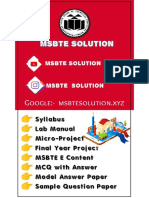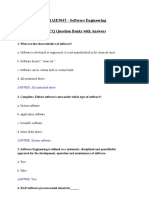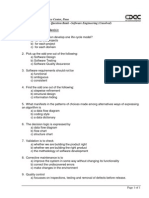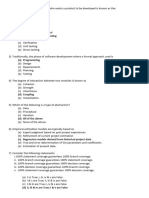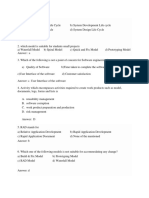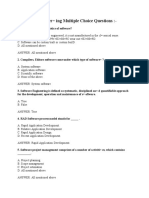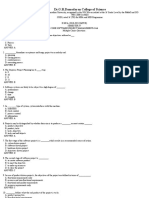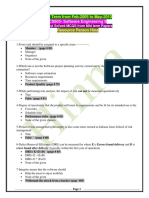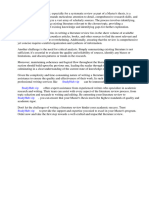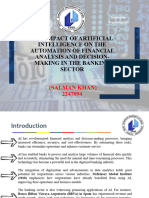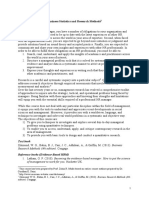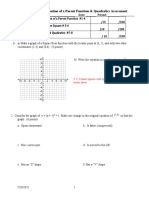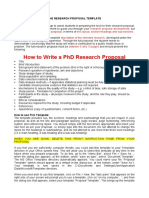0% found this document useful (0 votes)
91 views7 pagesSe MCQ
The document contains a series of questions related to Software Engineering, covering various models, testing methods, and requirements analysis. It includes multiple-choice questions that assess knowledge on topics such as the Waterfall model, Agile development, CMMI, and software quality management. The questions are designed for educational purposes, likely for students at the Holy Mary Institute of Technology & Science.
Uploaded by
nirmalaesther15Copyright
© © All Rights Reserved
We take content rights seriously. If you suspect this is your content, claim it here.
Available Formats
Download as PDF, TXT or read online on Scribd
0% found this document useful (0 votes)
91 views7 pagesSe MCQ
The document contains a series of questions related to Software Engineering, covering various models, testing methods, and requirements analysis. It includes multiple-choice questions that assess knowledge on topics such as the Waterfall model, Agile development, CMMI, and software quality management. The questions are designed for educational purposes, likely for students at the Holy Mary Institute of Technology & Science.
Uploaded by
nirmalaesther15Copyright
© © All Rights Reserved
We take content rights seriously. If you suspect this is your content, claim it here.
Available Formats
Download as PDF, TXT or read online on Scribd
/ 7



